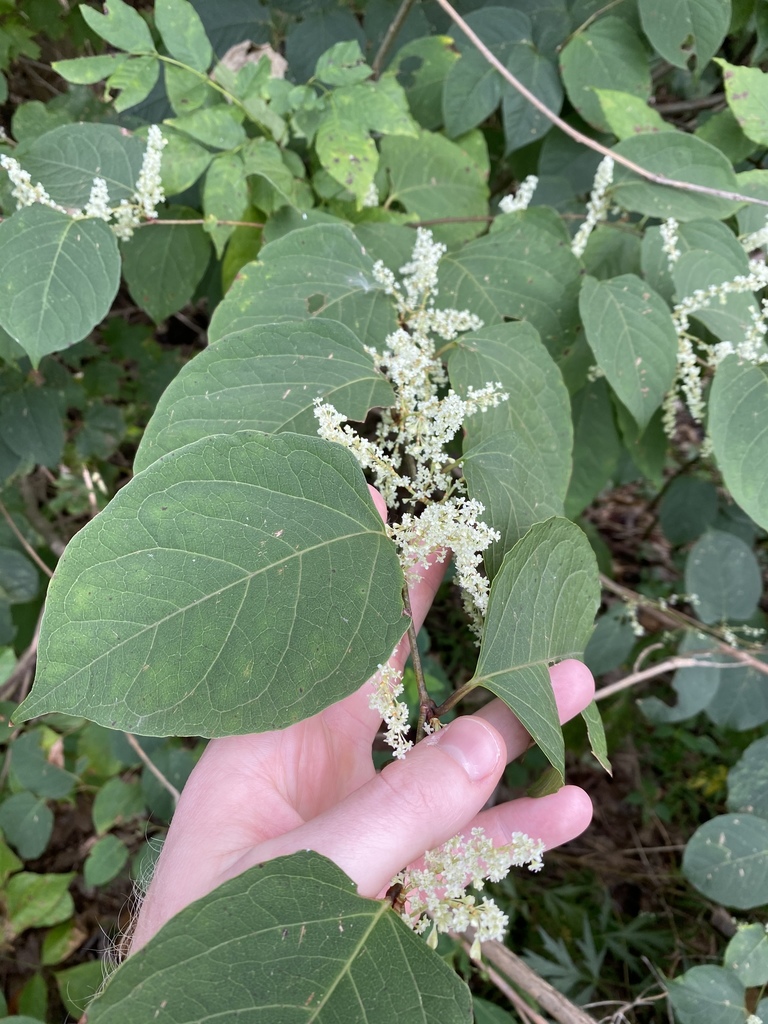by Rachel Reeb

We name what we notice, adopting or creating vocabulary to reflect all that our senses regularly engage.
Where multiple names exist in the same language for the same subject, nuance reigns. In Japan, for example, a historical collection of words referring to Reynoutria japonica (synonym: Fallopia japonica), the plant known commonly as itadori or Japanese knotweed, totaled to 689 terms. Some words referenced the plant’s shape and structure, others its sour taste, medicinal properties, seasonal appearance, or supporting habitat. Several dozen terms even noted audio characteristics, referencing the sound produced by the snapping of the plant’s stem.
Though the plant has deep cultural and ecological ties to its home range of Japan, Taiwan, China, and Korea, most of these connections are lost in its introduced range of western Pennsylvania, where it is considered to be an unwelcome invasive species. Information about how differently itadori is regarded in different parts of the world forces us to appreciate the diversity of human attitudes towards plants. Why are plant species perceived positively by some people, but negatively by others? To explore this question, a research paper documenting the rich cultural and ecological history of itadori in Japan (“Fallopia japonica (Japanese Knotweed) in Japan: Why Is It Not a Pest for Japanese People,” M. Shimoda and N. Yamasaki, 2016) made the journal club reading list for the scientists and educators involved in the collaborative Invasive Plant Species Education and Outreach Campaign funded by the Richard King Mellon Foundation.

Itadori, or Japanese knotweed, has co-evolved with the humans, plants, and animals living in its home range for thousands of years. It’s no wonder that there are so many names for this plant in Japan, where people have co-existed with itadori and passed down their knowledge of the species over generations. Throughout history, humans found many uses for itadori in food, medicine, floral arrangements, and even as a children’s toy!
Today, in Japan, itadori commonly grows around lawns and roadsides, but it is not considered to be a pest because it can easily be mowed and managed. In comparison, itadori was introduced to western Pennsylvania in the early 1900s, making our collective experience with the plant relatively recent by botanical standards.
People widely planted itadori in ornamental gardens across the continent, but did not anticipate that it would escape cultivation and become established in nature. Here, many of the natural ‘checks and balances’ that stabilized itadori populations in the home range have been lost, including its insect pests, fungi, and plant competitors. Humans also lack deep ties to itadori in the introduced range, and consider it to be more detrimental than it is useful. The fast-growing plant often causes structural damage to buildings, is extremely expensive to manage, and displaces many of the native plants and animals we have formed connections with.
Thousands of years from now, itadori is likely to form new ecological and cultural connections in its introduced environment of Pennsylvania. What new names might we use to describe it, as our relationship to this plant evolves over time?
Rachel Reeb is a postdoctoral research fellow in the Section of Botany at Carnegie Museum of Natural History and content creator and project manager for the Invasive Species Awareness Campaign.
Related Content
Celebrating the Weed That Engulfed Western Pennsylvania?
Collected On This Day in 1989: Japanese Knotweed
Collected On This Day in 1930: Common Reed
Carnegie Museum of Natural History Blog Citation Information
Blog author: Reeb, RachelPublication date: November 30, 2023
